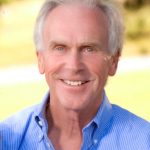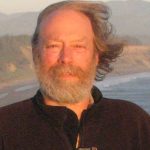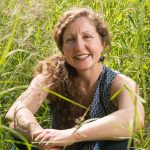Sierra Club Forests and Climate Webinar
Sierra Club Forests and Climate Webinar by Dominick DellaSala and Jason Grant.
View the presentation- https://www.dropbox.com/s/56zrp1j3ea5615u/Forests%20&%20Climate_092519%20copy.pptx?dl=0
View the recording- https://zoom.us/recording/share/M03C_q4FuYzAtJjJ7AFIS8ZXvpY0Qozff4qO194zqJewIumekTziMw
Chief Scientist Dr. Dominick DellaSala’s letter to Oregon Governor Kate Brown’s Wildfire Council on how the state can best prepare communities for wildfires
I am a conservation scientist with over 200 peer-reviewed publications including books on forest-fire ecology, climate change, and forest management globally and in Oregon. I also served on the Oregon Global Warming Commission Task Force on Carbon, and the Governor’s Forest Carbon Stakeholder Group. I have reviewed the report from the mitigation subcommittee and I write to provide input and a summary of the scientific literature on wildfires in a changing climate to help with your deliberations.
Not Just Brazil: Troubles In Temperate Rainforests
The world took notice of the summer’s fires in the Amazon region of Brazil. The tropical rainforests are often called “the Earth’s lungs” for the oxygen they supply.
Far less notice is taken of the fate of rainforests in temperate zones, including in the Pacific Northwest. Logging continues on both sides of the US/Canada border, and that concerns a pair of scientists well-versed in the workings of those forests.
Jens Wieting is with Sierra Club BC and Dominick DellaSala is with Geos Institute based in Ashland.
They visit the studio to discuss their concerns for the temperate rainforests and the creatures that depend upon them.
Listen to the exchange: https://www.ijpr.org/post/not-just-brazil-troubles-temperate-rainforests#stream/0
Oregon Governor’s Council Projects Big Bill To Manage Wildfire
by Cassandra Profita | OPB Sept. 27, 2019 1:54 p.m. | Portland, Ore.
Oregon Gov. Kate Brown got a progress report from her Council on Wildfire Response on Thursday, and it came with a hefty price tag.
The board is advising the governor on how to change the state’s wildfire policy in response to growing wildfire risks from overstocked forests, population growth and climate change.
Council Chair Matt Donegan told the governor that one of the major changes the board is recommending is increased investment in wildfire suppression.
“It just stands to reason that in an era of climate change, in an era of fuel buildup and in an era of population growth and increased wildfire activity that we’re going to have to spend more resources suppressing fire,” he said.
He said the state will need an estimated $4 billion in “a multi-decade initiative that will involve significant state, federal and private investment” to reduce wildfire risks through actions such as logging overstocked forestland.
“That number feels a bit overwhelming,” Brown said in response. “But I think it’s critically imperative that we bite off a significant chunk right now — immediately.”
The governor said she wants to spend more to improve wildland firefighting capabilities, increase controlled burning and help communities live with more wildfire smoke.
“There isn’t really a fire season anymore. It’s year-round. It’s increasing in Oregon and frankly around the entire globe,” she said. “I obviously know we need to do things differently and we need different tools and we clearly need additional resources.”
Megafires Not Increasing: New Research Shows Large High-Severity Fires are Natural in Western Forests
In September 2019, Dr. Dominick DellaSala (Geos Institute) and Chad Hanson (Earth Island Institute) published a peer-reviewed study in the science journal Diversity disputes the widely held belief that “megafires” in our national forests are increasing, preventing forests from re-growing, and that logging is necessary to prevent these wildfires. Read the Press Release
“This is the most extensive study ever conducted on the high-severity fire component of large fires, and our results demonstrate that there is no need for massive forest thinning and salvage logging before or after a forest fire” – Dominick DellaSala
Links to the study
- Abstract: https://www.mdpi.com/1424-2818/11/9/157
- HTML Version: https://www.mdpi.com/1424-2818/11/9/157/htm
- PDF Version: https://www.mdpi.com/1424-2818/11/9/157/pdf
- For more information on the Rim fire, visit .
Press Coverage
Forest thinning projects won’t stop the worst wildfires
So why is California spending millions on them?
A recent Los Angeles Times project explores the effectiveness of firebreaks across California, with satellite and drone footage showing the devastation caused by recent fires, including the Camp fire in 2018.
Post-conflagration photos of Paradise reveal row after row of houses reduced to heaps of ash, while nearby trees and vegetation stand green and largely untouched by flame. In the Camp fire, the primary fuel was houses, not vegetation.
Jack Cohen, a retired Forest Service research scientist who studied ignitions and wildfire spread, said he’s been asked to explain the “unusual pattern of destruction” in Paradise.
His response: “It’s not strange and unusual — it’s typical. Every investigation I’ve done comes up with that pattern.”
“We do fuel breaks because the premise is we’ve got a wildfire containment problem” when in fact, Cohen argues, we have a home ignition problem.
Until firefighting agencies recognize that, he said, their efforts are doomed to “further failure at ever increasing cost.”
The Tongass deserves a better path forward
By Dominick A. DellaSala
Originally published 9/11/2019 at the Anchorage Daily News
In response to former Gov. Frank Murkowski’s Sept. 6 op-ed calling for a full exemption of the Tongass National Forest from roadless protections, its remarkable how much has changed since he was governor. Instead of regressing to the heyday of rampant old-growth logging, no longer acceptable in Alaska or the nation, there is a path forward that reduces controversy, sustains jobs, saves roadless areas and slows down climate chaos by transitioning to young-growth forests. And as far as access issues he is concerned about, the Forest Service already has exercised its discretion to approve 67 projects in roadless areas that involved tree removal and/or road construction. So, the Trump Administration’s roadless rollbacks is completely unnecessary.
There is a better way forward to avoid the kind of global outrage now directed at massive logging in Amazonia, as both the Amazon and the Tongass play vital roles in slowing down runaway climate chaos as the planet’s “lungs.”
Megafires Not Increasing: New Research Shows Large High-Severity Fires are Natural in Western Forests (Press Release)
For Immediate Release, September 10, 2019
From Geos Institute and The John Muir Project
Contact: Eric Podolsky, eric@pikeandcompany.com, (415)585-2100, photos available via e-mail
“MEGAFIRES” NOT INCREASING: NEW RESEARCH SHOWS LARGE HIGH-SEVERITY FIRES ARE NATURAL IN WESTERN FORESTS
Case Study Rebukes U.S. Forest Service’s Post-Fire Clearcut Methods
ASHLAND, OR – SEPTEMBER 10, 2019 – A peer-reviewed study by leading experts of forest and fire ecology recently published in the science journal Diversity disputes the widely held belief that “megafires” in our national forests are increasing, preventing forests from re-growing, and that logging is necessary to prevent these wildfires. While many policy and management decisions in U.S. national forests are based on these assumptions, research shows that large patches of trees killed by wildfires—known as high-severity burn patches—have not been increasing. These findings thus show that taxpayer-funded logging projects on public lands are not only unnecessary, they are also counter-productive, as related research shows that such logging often increases fire severity.
Researchers analyzed the most extensive contemporary and historical datasets ever collected on large (over 1,000 acres) high-severity burn patches across 11 western dry pine and mixed-conifer forests over three decades. The findings dispute the prevailing belief that increasing “megafires” are setting back post-fire forest regeneration.
“This is the most extensive study ever conducted on the high-severity fire component of large fires, and our results demonstrate that there is no need for massive forest thinning and salvage logging before or after a forest fire,” says Dr. Dominick A. DellaSala, lead author of the study and Chief Scientist at the Geos Institute. “The perceived ‘megafire’ problem is being overblown. After a fire, conditions are ideal for forest re-establishment, even in the interior of the largest severely burned patches. We found conditions for forest growth in interior patches were possible over 1000 feet from the nearest low/moderately burned patch where seed sources are most likely.”
It’s time to get it right with Tongass, timber, carbon and climate change
By Catherine M. Mater and Dominick A. DellaSala
Opinion article published August 29, 2019 in the Juneau Empire
A perfect storm is brewing in Southeast Alaska and all weather vanes are pointing to the Tongass National Forest — the “Amazon” of America that serves as lungs of the nation by absorbing and storing the equivalent of almost 10 percent of all the carbon retained in U.S. forests. Alaska has been in the national news with coverage of dried-up salmon spawning grounds due to unprecedented drought, and dwindling deer populations from logging old growth on Prince of Wales Island; all while the White House and Alaskan officials double down on eliminating protections for Alaska’s roadless old growth stands.
Understanding the connection between the Tongass, continued timber production, climate change and the real need for creating economic development in the state has never been more urgent. But these seemingly disparate silos offer a comprehensive solution.
While the state’s forest products industry that relies on old growth timber has sharply declined, a new one is emerging focused on transitioning out of old growth logging to reliance on Tongass young growth — 55-75-year-old trees — timber supply.
Dominick DellaSala talks Tongass rainforest with Rick Ungar
Dominick DellaSala took some time to talk with Rick Ungar about the Tongass and the president’s proposal to open the forest up for more logging. Listen to the segment here.
Latest News
Stay Updated!
Sign up to stay updated on our current initiatives and receive information you can use to build resilience in your community.

 Arsum is the Senior Adaptation and Coastal Resilience Specialist for the National Wildlife Federation’s Southcentral Region. In this role, she advances climate adaptation efforts, with a focus on nature-based approaches to address the impacts of climate change and extreme events across the Gulf region. She has authored and co-authored numerous publications on climate impact assessments and adaptation solutions. Additionally, she regularly participates in state-based coastal resilience and hazard mitigation planning across the Gulf, collaborating with regional and local stakeholders.
Arsum is the Senior Adaptation and Coastal Resilience Specialist for the National Wildlife Federation’s Southcentral Region. In this role, she advances climate adaptation efforts, with a focus on nature-based approaches to address the impacts of climate change and extreme events across the Gulf region. She has authored and co-authored numerous publications on climate impact assessments and adaptation solutions. Additionally, she regularly participates in state-based coastal resilience and hazard mitigation planning across the Gulf, collaborating with regional and local stakeholders. Frank is the former President of the Reinsurance Association of America. Frank currently serves on the Advisory Board of the OECD’s International Network for the Financial Management of Large-Scale Disasters, the RAND Center on Catastrophic Risk Management and Compensation, and the University of Cincinnati’s Carl H. Lindner III Center for Insurance and Risk Management Advisory Board.
Frank is the former President of the Reinsurance Association of America. Frank currently serves on the Advisory Board of the OECD’s International Network for the Financial Management of Large-Scale Disasters, the RAND Center on Catastrophic Risk Management and Compensation, and the University of Cincinnati’s Carl H. Lindner III Center for Insurance and Risk Management Advisory Board. Jim is a multilingual world traveler. Based in Bavaria during the 1970s, Jim spent most of this period in India, Afghanistan and Nepal, where he founded and operated a charitable medical clinic serving Tibetan Refugees. He settled in Oregon in 1983 on a forested ranch in the Umpqua National Forest.
Jim is a multilingual world traveler. Based in Bavaria during the 1970s, Jim spent most of this period in India, Afghanistan and Nepal, where he founded and operated a charitable medical clinic serving Tibetan Refugees. He settled in Oregon in 1983 on a forested ranch in the Umpqua National Forest. Dr. Micah Hahn is an Associate Professor of Environmental Health in the Institute for Circumpolar Health Studies at the University of Alaska-Anchorage. She received her joint PhD in Epidemiology / Environment and Resources from the University of Wisconsin-Madison and her MPH in Global Environmental Health from Emory University. Subsequently, she was a postdoctoral fellow for the CDC Climate and Health Program, and in this position worked collaboratively with the CDC Division of Vector-borne Diseases and the National Center for Atmospheric Research. Her research focuses on understanding the health impacts of climate change and working with communities to develop locally-relevant adaptation and resilience-building strategies. Dr. Hahn is also on the Management Team of the Alaska Climate Adaptation Science Center.
Dr. Micah Hahn is an Associate Professor of Environmental Health in the Institute for Circumpolar Health Studies at the University of Alaska-Anchorage. She received her joint PhD in Epidemiology / Environment and Resources from the University of Wisconsin-Madison and her MPH in Global Environmental Health from Emory University. Subsequently, she was a postdoctoral fellow for the CDC Climate and Health Program, and in this position worked collaboratively with the CDC Division of Vector-borne Diseases and the National Center for Atmospheric Research. Her research focuses on understanding the health impacts of climate change and working with communities to develop locally-relevant adaptation and resilience-building strategies. Dr. Hahn is also on the Management Team of the Alaska Climate Adaptation Science Center. Michael is a former Founding Principal of Resilient Cities Catalyst, a global non-profit helping cities and their partners tackle their toughest challenges. He is currently the Executive Director of Climate Resilience Academy at the University of Miami.
Michael is a former Founding Principal of Resilient Cities Catalyst, a global non-profit helping cities and their partners tackle their toughest challenges. He is currently the Executive Director of Climate Resilience Academy at the University of Miami. Dr. Quintus Jett is a consultant, educator, and strategist for public causes. He has a doctorate in Organizations & Management from Stanford University, and a two-decade faculty career which spans schools, departments, and programs of business, engineering, liberal studies, divinity, and public and nonprofit management. Following Hurricane Katrina in 2005, Dr. Jett launched a volunteer project in New Orleans, which enlisted residents, students from over a dozen colleges and universities, and hundreds of others to field map the city’s Gentilly district, Lower Ninth Ward, and New Orleans East. Dr. Jett is an innovator in higher education, bridging the divide between academic research and the other priorities of the modern university, including student access and diversity, community engagement, and providing foundations for life-long learning in today’s rapidly changing world.
Dr. Quintus Jett is a consultant, educator, and strategist for public causes. He has a doctorate in Organizations & Management from Stanford University, and a two-decade faculty career which spans schools, departments, and programs of business, engineering, liberal studies, divinity, and public and nonprofit management. Following Hurricane Katrina in 2005, Dr. Jett launched a volunteer project in New Orleans, which enlisted residents, students from over a dozen colleges and universities, and hundreds of others to field map the city’s Gentilly district, Lower Ninth Ward, and New Orleans East. Dr. Jett is an innovator in higher education, bridging the divide between academic research and the other priorities of the modern university, including student access and diversity, community engagement, and providing foundations for life-long learning in today’s rapidly changing world. Scott is Monfort Professor of Atmospheric Science at Colorado State University. He has written about 100 publications in the peer-reviewed climate literature, is a former editor of the Journal of Climate, and served for five years as founding Science Chair of the North American Carbon Program.
Scott is Monfort Professor of Atmospheric Science at Colorado State University. He has written about 100 publications in the peer-reviewed climate literature, is a former editor of the Journal of Climate, and served for five years as founding Science Chair of the North American Carbon Program. Linda has many years of experience in disaster preparedness and resilience. She has been an elected official on the Linn County Iowa Board of Supervisors, Chair of the Metropolitan Planning Organization, the East Central Iowa Council of Governments, the statewide Mental Health Developmental Disability and the Linn County Board of Health. Langston is a former president of the National Association of Counties (2013-2014).
Linda has many years of experience in disaster preparedness and resilience. She has been an elected official on the Linn County Iowa Board of Supervisors, Chair of the Metropolitan Planning Organization, the East Central Iowa Council of Governments, the statewide Mental Health Developmental Disability and the Linn County Board of Health. Langston is a former president of the National Association of Counties (2013-2014). Ken works with families and organizations as a mediator, organizational consultant, trainer and facilitator. Along with his passion for helping people prepare for and reduce climate change, Ken also volunteers as a mediator through Mediation Works and is passionate about supporting youth through mentoring with Boys to Men of Southern Oregon.
Ken works with families and organizations as a mediator, organizational consultant, trainer and facilitator. Along with his passion for helping people prepare for and reduce climate change, Ken also volunteers as a mediator through Mediation Works and is passionate about supporting youth through mentoring with Boys to Men of Southern Oregon. Matthew is a retired high school teacher who was once honored as Oregon High School Social Studies Teacher of the Year. Before his teaching career he was in the restaurant business in Portland. He is also a lawyer who has been a member of the Oregon State Bar Association since 1980.
Matthew is a retired high school teacher who was once honored as Oregon High School Social Studies Teacher of the Year. Before his teaching career he was in the restaurant business in Portland. He is also a lawyer who has been a member of the Oregon State Bar Association since 1980. Andrea is the Resilience Policy Advisor for the North Carolina Office of Recovery and Resiliency. She works across state agencies and with local governments to increase the state’s resilience to the impacts of climate change.
Andrea is the Resilience Policy Advisor for the North Carolina Office of Recovery and Resiliency. She works across state agencies and with local governments to increase the state’s resilience to the impacts of climate change.